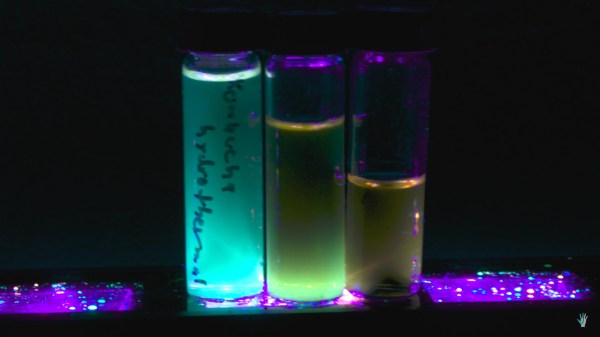Citizen scientist extraordinaire [Thought Emporium] put out a new video about colorful quantum dots which can be seen below the break. Quantum dots are a few nanometers wide and you can tell which size they are by which color they fluoresce. Their optical and electrical properties vary proportionally with size so red will behave differently than purple but we doubt they will taste like “cherry” and “grape.” Let’s not find out. This makes sense when you realize that a diamond will turn into black powder if you pulverize it. Carbon is funny like that.
[Thought Emporium] uses the video for two purposes. The first is to demonstrate the process he uses to make different size quantum dot in his home lab. The second purpose is to implore the scientific community, in general, to take better care when publishing scientific papers. A flimsy third reason is to show that the show must go on. Partway through, all the batteries for his light were dead so he hastily soldered a connection for his benchtop power supply.
We’ve mentioned [Thought Emporium] a few times before. Another of his carbon-based experiments involved graphene creation. How about magnetic DNA extraction? [Thought Emporium] did that too. If you can’t get enough magnets, how about implanting one?
Continue reading “Carbon Quantum Dots In Your Favorite Color”



 The board uses the
The board uses the 









